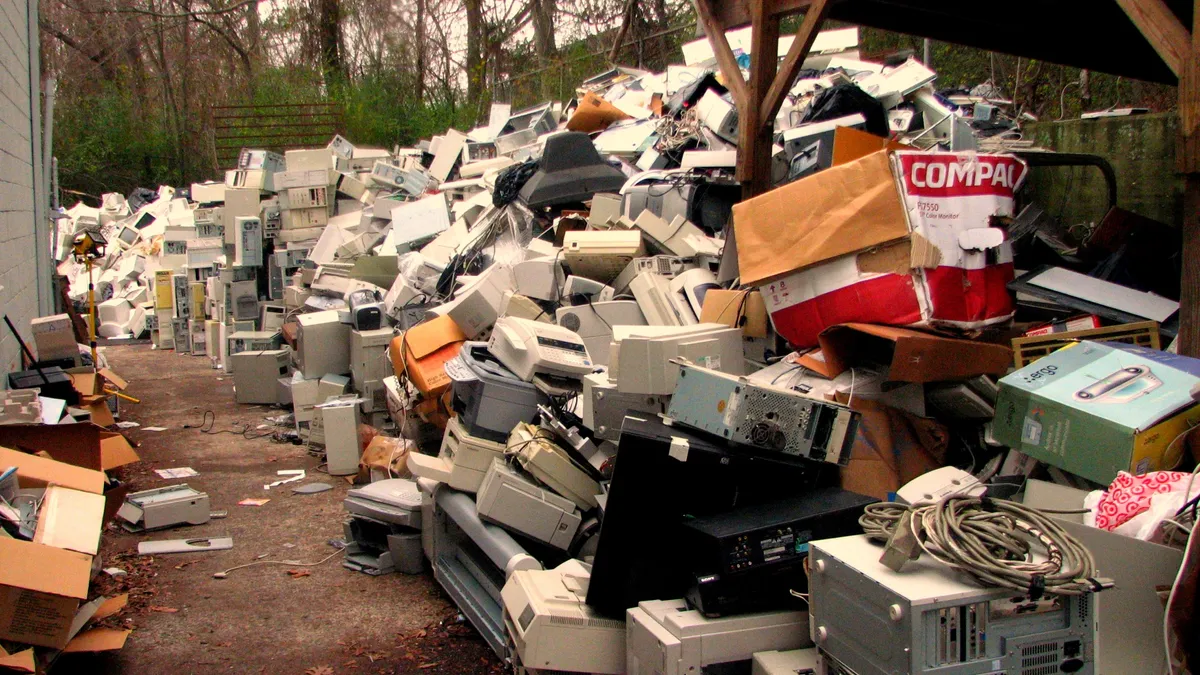Dive Brief:
- In an assessment of 40 tablet, smartphone and laptop models across 17 brands, Greenpeace East Asia and iFixit found that around 70% of surveyed devices had batteries that were "impossible or difficult" to replace. Only 14 of 44 tested batteries were designed to be easily replaced by end-users, according to Greenpeace.
- Greenpeace and iFixit also found that a device’s display is the most "problematic" component when it comes to reparability. 30 of 44 tested devices had “difficult or costly” displays to replace.
- Only three of the represented tech companies – Dell, HP and Fairphone – provided manuals and spare parts for consumers to repair their own devices. Overall, products from Apple, Samsung and Microsoft were deemed most difficult for users to fix.
Dive Insight:
This Greenpeace and iFixit survey is the latest chapter in the e-waste and right to repair saga. Electronic devices that are harder to repair or refurbish are more likely to be landfilled – and, with over 3.8 billion electronic devices in American households today, the forecast is grim.
For a time, it was common thought that the most affordable and profitable option for dealing with e-waste was shredding devices and recovering the raw material, but some are now turning toward refurbishing devices in search of profit. An analysis by iFixit says that, in tackling e-waste by expanding repair operations, 200 jobs could be created for every 1,000 tons of use electronic devices.
E-waste isn’t just a problem for landfills – it’s dangerous for consumers and companies, too. Batteries in the waste stream can create explosions and fires that are dangerous and costly. And, while Greenpeace didn’t use the infamous Samsung Galaxy Note 7 as one of the surveyed devices, the organization did point out that if the phone had a battery that could be easily replaced by the consumer, the massive recall could have been avoided.














